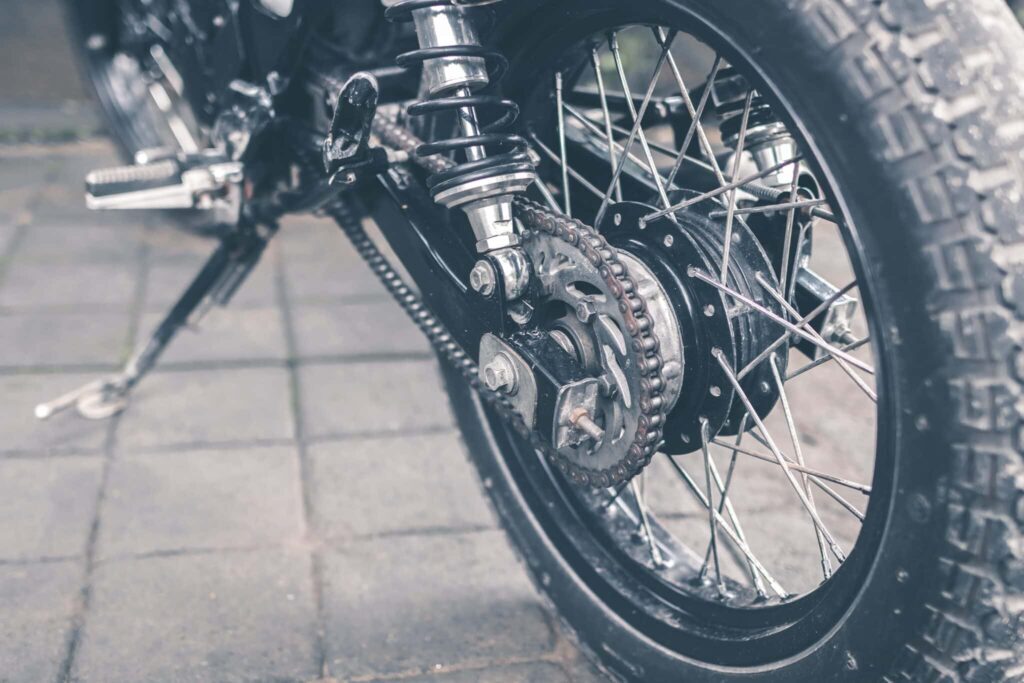How to Tighten an ATV Chain That Keeps Coming Off


Does your ATV chain keep coming off? It’s a safety hazard and can ruin your day of riding. Here’s how to diagnose the problem and how to tighten the chain as a solution.
Hopefully, you can diagnose a loose chain long before it comes off. Noticing the common symptoms of a loose ATV chain can allow you to fix it. As you are riding, watch out for these signs.
There are a few reasons why all of this could be happening, from failing bearings to loose carrier bolts to a stretched-out chain. For the purposes of this article, we will consider the problem a loose chain that needs to be tightened. If you still encounter chain slippage or similar issues after tightening the chain, it’s worth a second look.
Here’s an important thing to know: just as an ATV chain can be too loose, it can also be too tight. If you have overtightened your chain, you will also experience problems with performance. Common signs are excess wear, suspension issues, and power loss.
The easiest way to know how tight your ATV chain should be is to consult the owner’s manual. It will indicate the recommended slack in the chain, which usually sits somewhere between one and one and a half inches. Have someone sit on your ATV so you can see how the chain tension is with someone riding, measuring from the chain guard as the chain rests naturally.
Then, measure again while pulling up on the chain to get the measurement at the highest point. When you take the difference between those two measurements, you will know what the slack is.
If you have determined that your ATV chain is too slack, it’s time to tighten it! First, loosen the bolts on the bearing carrier at the back of your ATV, as well as the jam nuts on the chain adjuster. Then, locate the chain adjuster bolts and tighten them. This will tighten the chain.
Again, you will need a partner for this. With someone sitting on the ATV, take the measurements that indicate slack again. Keep doing this until you have the slack in the correct range according to your owner’s manual. When the slack is correct, remember to go back and tighten the jam nuts and bearing carrier bolts.
What if you do not have adjuster bolts? You will need to take a different approach. First, loosen the bolts on the bearing carrier, just as you would if you were working on a machine with adjuster bolts.
Now, instead of looking for the adjuster bolt, you will be looking for a hole that gives access between the carrier and sprocket. Insert an Allen key in that hole while spinning the rear wheel forward, ultimately rotating the bearing carrier and tightening the chain.
You will still need someone sitting on the ATV to take slack measurements, repeating the above process until it is correct. Again, remember to tighten any hardware you loosened to make this adjustment.
Regular inspection and maintenance of your ATV chain will prevent issues like slippage. If you want your ATV to run smoothly, make this a regular part of your pre-ride routine. Any time you experience resistance, power loss, or strange sounds, be sure to check out the chain.
Clean your ATV chains regularly with the ATV up off the ground on a stand or jack. Remove any accumulated mud or grime with a cloth and lubricate the chain with an appropriate product. While applying ATV chain lubricant, spin the sprocket, then wipe off any excess lubricant, taking care to avoid the brake parts.
Sometimes, even with maintenance and inspection, you will need a new chain. If you hear those chain slap sounds, feeling loose sections of the chain, notice rust, or can’t keep it tight, consider a new chain. Still, knowing what to watch for and committing to maintenance should ensure that chain replacement is not a regular part of your ATV experience.
Disclaimer: While we endeavor to keep the information on our blog up to date and correct, Maxtrade (Coolster) makes no representations or warranties of any kind, express or implied about the completeness, accuracy, reliability, suitability, or availability with respect to the website or the information, products, services, or related graphics contained on the website for any purpose. Any reliance you place on such material is therefore strictly at your own risk.
Register